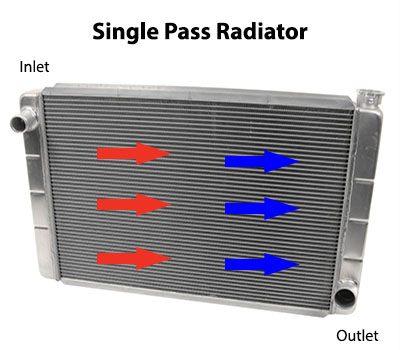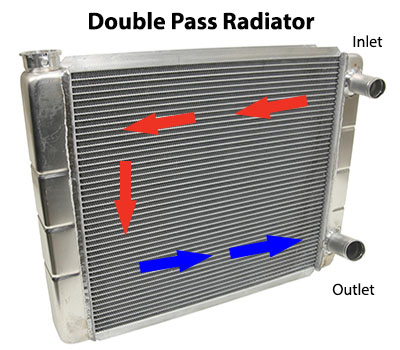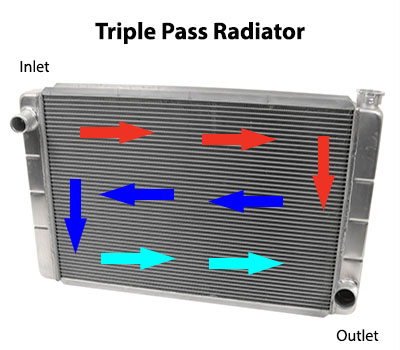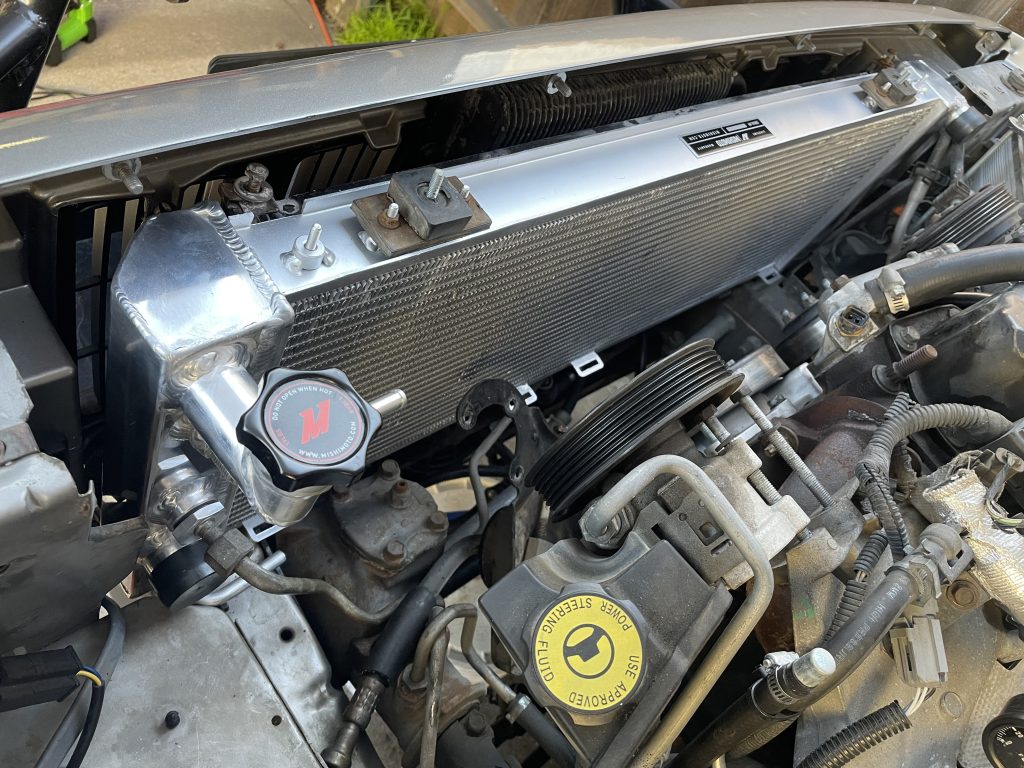Q: What is a double-pass radiator?
…
A: In a single-pass radiator, coolant only crosses the radiator core one time.

- Fluid enters the inlet.
- It flows across the core in tubes.
- It is collected in the opposite side tank.
- It exits the outlet and flows through the system again.
Single-pass radiators work well in most street applications. For stock and mildly modified engines, they provide adequate cooling.
Replacing a single-pass radiator usually requires no modifications. The inlet and outlet will be on opposite sides of the radiator. Also, your stock water pump can handle the flow requirements.
Double-Pass Radiators
A double-pass radiator is divided in half. Coolant crosses the core twice.

- Fluid enters the inlet.
- A baffle inside the tank directs incoming fluid across the top half of the core.
- The fluid collects in the opposite side tank.
- It flows back across the core on the bottom half.
- It exits the outlet and flows through the system again.
A double-pass radiator is considered an upgrade over a single-pass. All else being equal, a double-pass radiator can increase cooling efficiency 5-10 percent. It works well in both street and race applications.
Replacing a single-pass radiator with a double-pass will require some modifications. The inlet and outlet will be on the same side of the radiator. So, custom hoses may be required. Also, a high-volume water pump is recommended.
Triple-Pass Radiators
A triple-pass radiator is exactly what you think. Coolant crosses the core three times.

- Fluid enters the inlet.
- A baffle inside the tank directs incoming fluid across the top of the core.
- A baffle in the opposite side tank directs the fluid across the middle of the core.
- The fluid collects in the opposite side tank.
- It flows back across the core on the bottom.
- It exits the outlet and flows through the system again.
A triple-pass radiator works best with highly-modified race engines. High horsepower and power adders require more cooling capability.
Depending on the specific application, a triple-pass radiator can increase cooling efficiency 10-20 percent. A triple-pass radiator is probably overkill for most street vehicles.
The triple-pass design will have the inlet and outlet on opposite sides. A high-volume water pump and a 1-to-1 pulley are usually required to ensure proper flow.
NOTE: For best radiator performance, always use the proper cooling fan and fan shroud.
…
This is another in a series of weekly Q&A Mailbag sessions with Summit Racing‘s tech department, in which there are hundreds more. Click here to see them all.


[…] Q: What is a double-pass radiator? … A: In a single-pass radiator, coolant only crosses the radiator core one time. Fluid enters the inlet. It flows across the core in […] Read full article at http://www.onallcylinders.com […]
awesome!